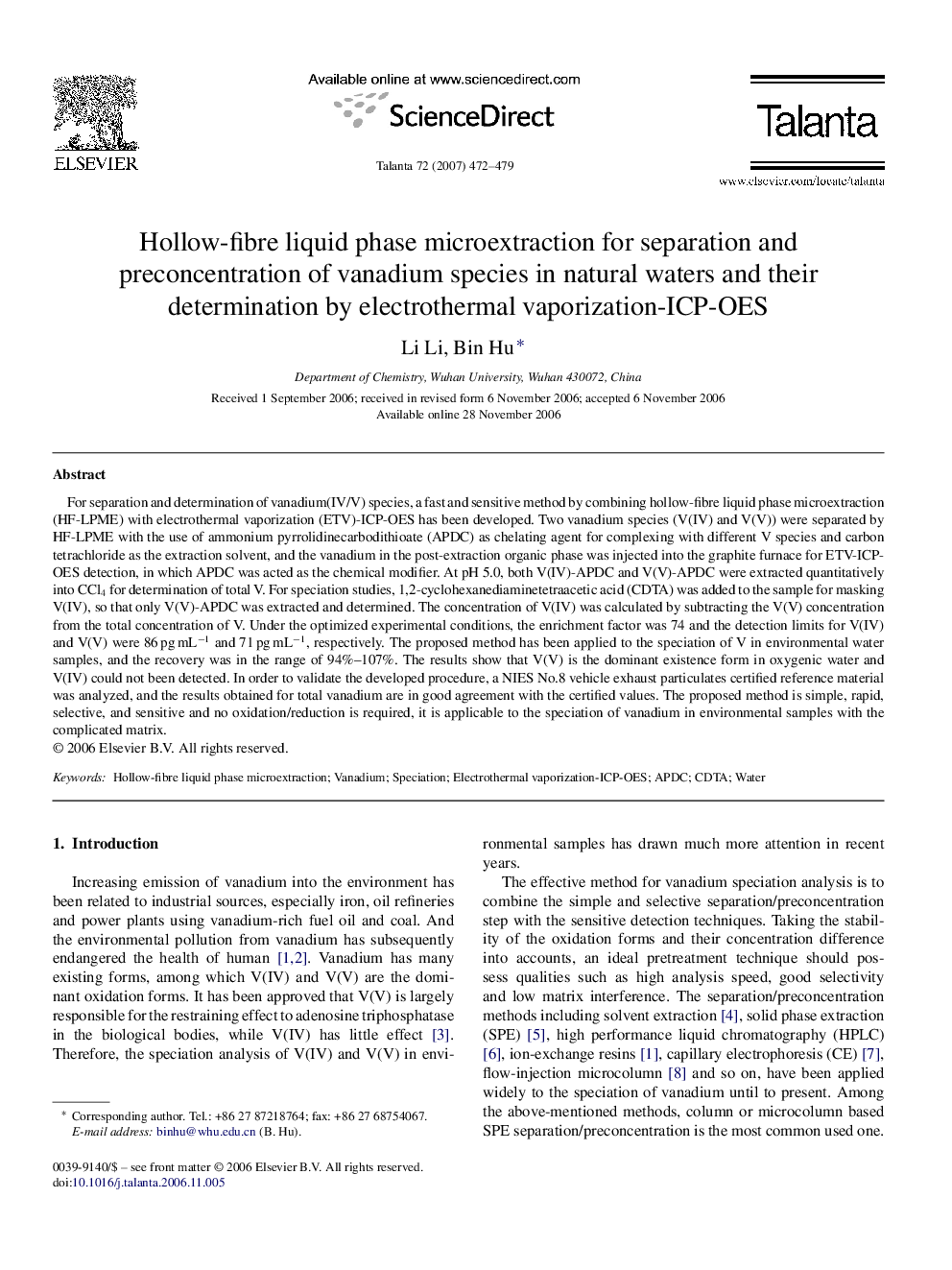| Article ID | Journal | Published Year | Pages | File Type |
|---|---|---|---|---|
| 1245965 | Talanta | 2007 | 8 Pages |
For separation and determination of vanadium(IV/V) species, a fast and sensitive method by combining hollow-fibre liquid phase microextraction (HF-LPME) with electrothermal vaporization (ETV)-ICP-OES has been developed. Two vanadium species (V(IV) and V(V)) were separated by HF-LPME with the use of ammonium pyrrolidinecarbodithioate (APDC) as chelating agent for complexing with different V species and carbon tetrachloride as the extraction solvent, and the vanadium in the post-extraction organic phase was injected into the graphite furnace for ETV-ICP-OES detection, in which APDC was acted as the chemical modifier. At pH 5.0, both V(IV)-APDC and V(V)-APDC were extracted quantitatively into CCl4 for determination of total V. For speciation studies, 1,2-cyclohexanediaminetetraacetic acid (CDTA) was added to the sample for masking V(IV), so that only V(V)-APDC was extracted and determined. The concentration of V(IV) was calculated by subtracting the V(V) concentration from the total concentration of V. Under the optimized experimental conditions, the enrichment factor was 74 and the detection limits for V(IV) and V(V) were 86 pg mL−1 and 71 pg mL−1, respectively. The proposed method has been applied to the speciation of V in environmental water samples, and the recovery was in the range of 94%–107%. The results show that V(V) is the dominant existence form in oxygenic water and V(IV) could not been detected. In order to validate the developed procedure, a NIES No.8 vehicle exhaust particulates certified reference material was analyzed, and the results obtained for total vanadium are in good agreement with the certified values. The proposed method is simple, rapid, selective, and sensitive and no oxidation/reduction is required, it is applicable to the speciation of vanadium in environmental samples with the complicated matrix.
